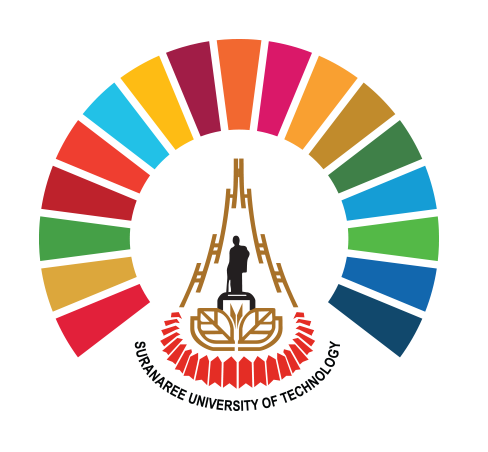Water pollution control in campus area
/4_5/001.jpg)
Description:
1. Policy
The university has measures to prevent pollution that can occur to all raw water sources used in tap water production, which will affect the quality of tap water used for consumption within the university. In addition, it also affects health and destroys the scenery of the university, so fishing in water bodies and the dumping of garbage or sewage of any kind into all water sources is prohibited.
In addition, there is a process to control wastewater from sources such as office buildings, academic buildings, student dormitories, housings, and staff residences, with wastewater collection troughs at the building to send wastewater directly into the university's wastewater treatment system to prevent wastewater from entering the rainwater collection gutters that flow into raw water sources. Wastewater from various laboratories of scientific and technological equipment buildings is collected in chemical wastewater treatment systems.
/4_5/002.jpg)
2. Wastewater Treatment
Wastewater generated from activities within the university enters the wastewater treatment system of 340,740 m3/year, accounting for 28.06% of tap water consumption (1,214,431 m3/year), which is a chemical and biological wastewater treatment system. The chemical wastewater treatment system can handle wastewater at 30 m3/day, and the biological wastewater treatment system can handle wastewater at 2,500 m3/day, which is 100% efficient in supporting wastewater generated (wastewater treatment system data and wastewater quality analysis are reported in 3.6 Sewerage Disposal) and water that has passed through the wastewater treatment system will enter the water recycling system to reuse water within the university, such as toilets and watering plants (Water recycling system information is reported in 4.2 Water Recycling Program Implementation).
3. Guidelines Standards
The University has implemented raw water quality control in accordance with the raw water standards of the Provincial Waterworks Authority as recommended by the World Health Organization (http://www.enviresearch.co.th/wp-content/uploads/ 2020/01/%E0%B8%A1%E0%B8%B2%E0%B8%95%E0%B8%A3%E0%B8%90%E0%B8%B2%E0%B8%99 %E0%B8%99%E0%B9%89%E0%B8%B3%E0%B8%94%E0%B8%B4%E0%B8%9A-WHO.pdf). This is to protect and maintain raw water quality to be suitable for tap water production and to maintain the scenery of water sources within the university.
4. Monitoring and Evaluation
The University has a monitoring and evaluation plan to monitor the quality of raw water sources used in tap water production every month. By sending samples to the Center for Scientific and Technological Instruments, Suranaree University of Technology (Testing and Certification Laboratory Service; http://cste.sut.ac.th/lsu2015) with a plan to send water samples for water quality analysis once a month.
